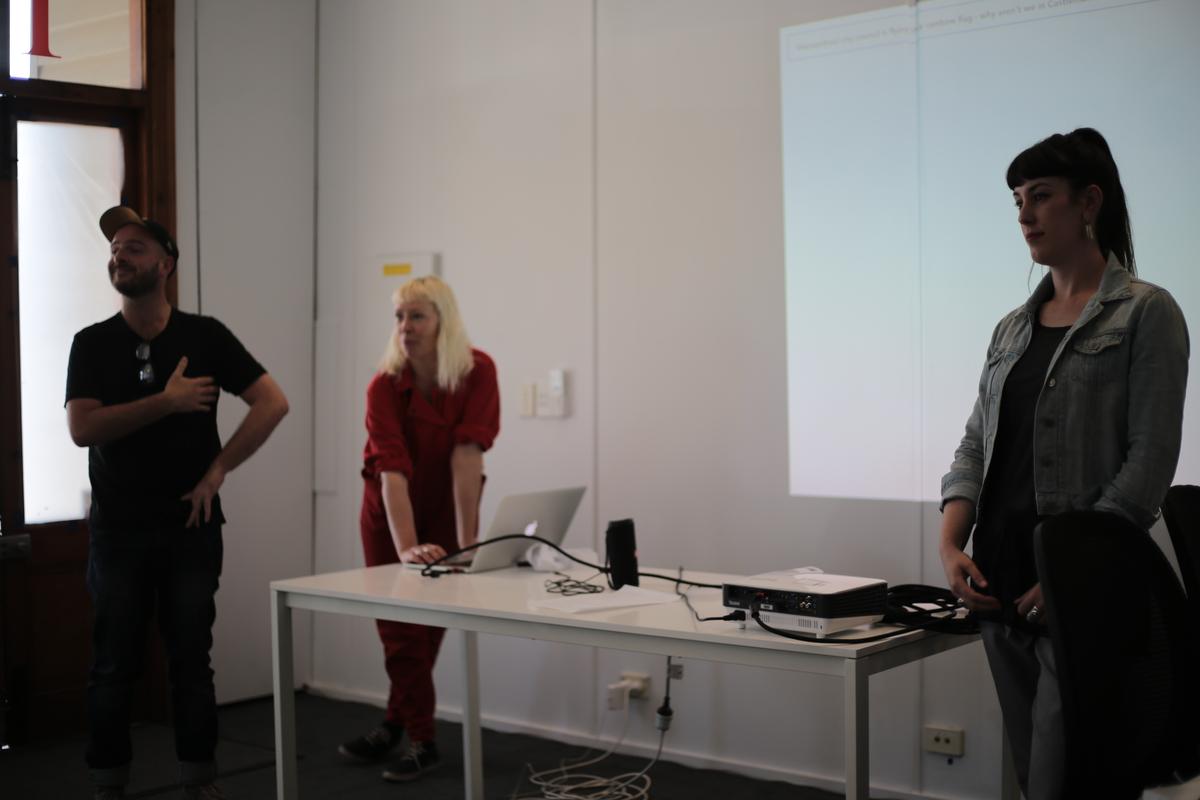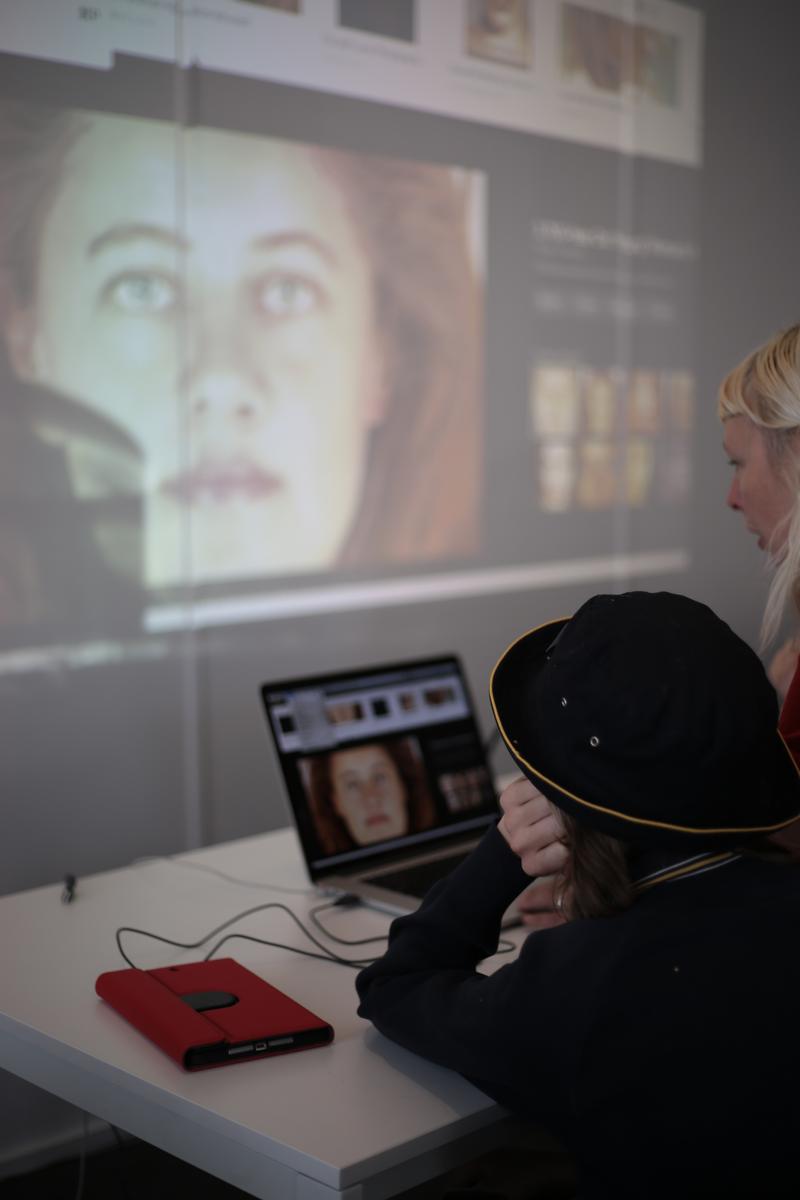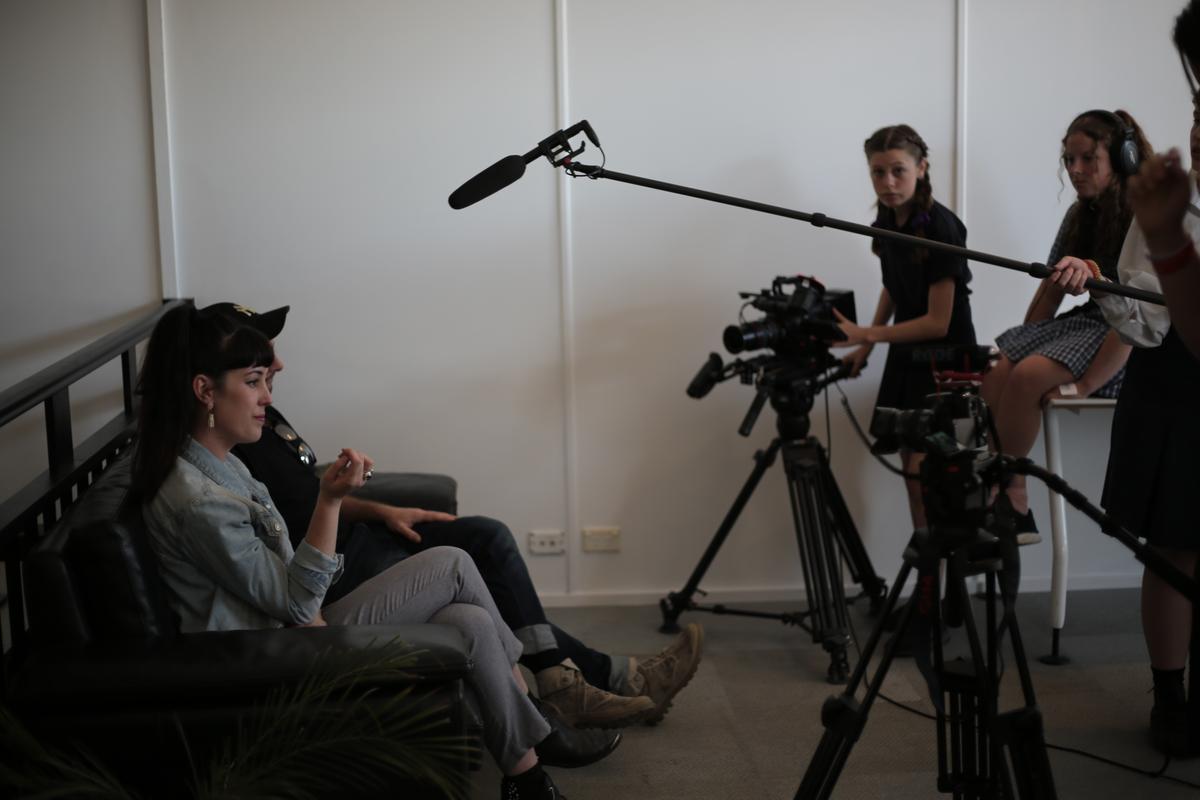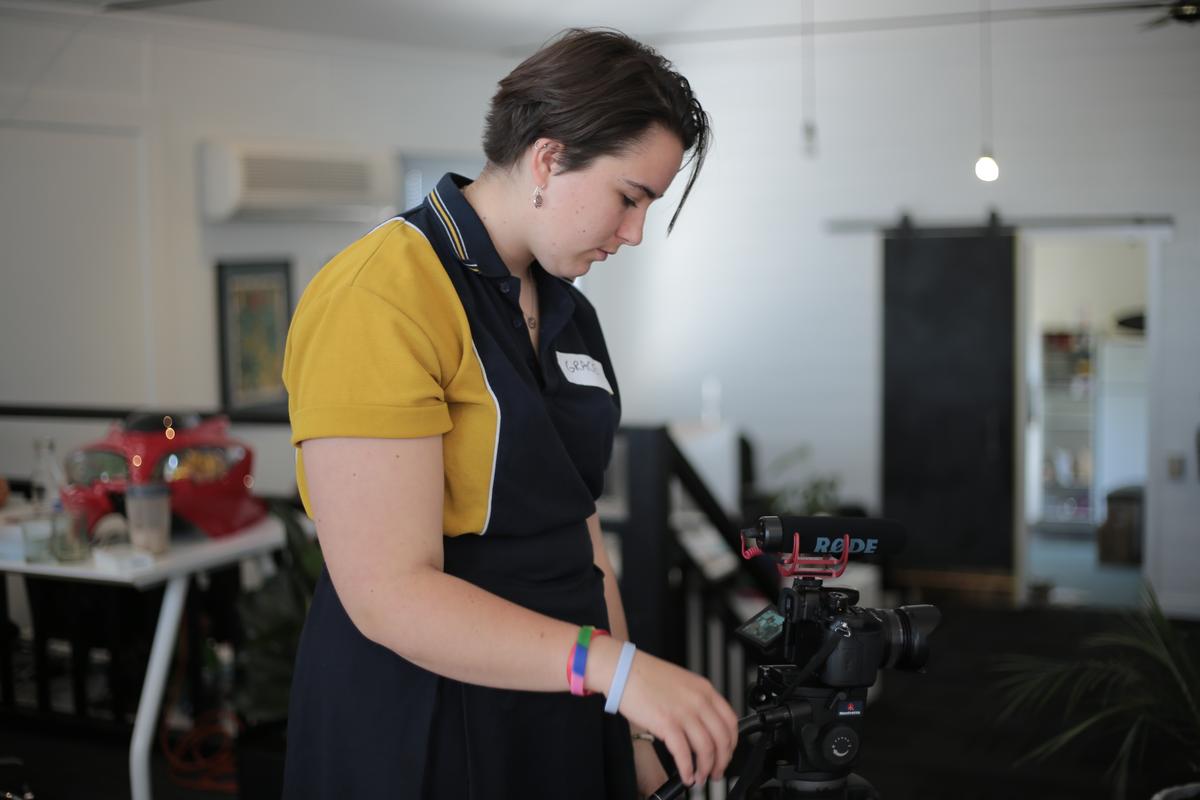Cyber Safety / Glandular Fever/ Youth Drugs
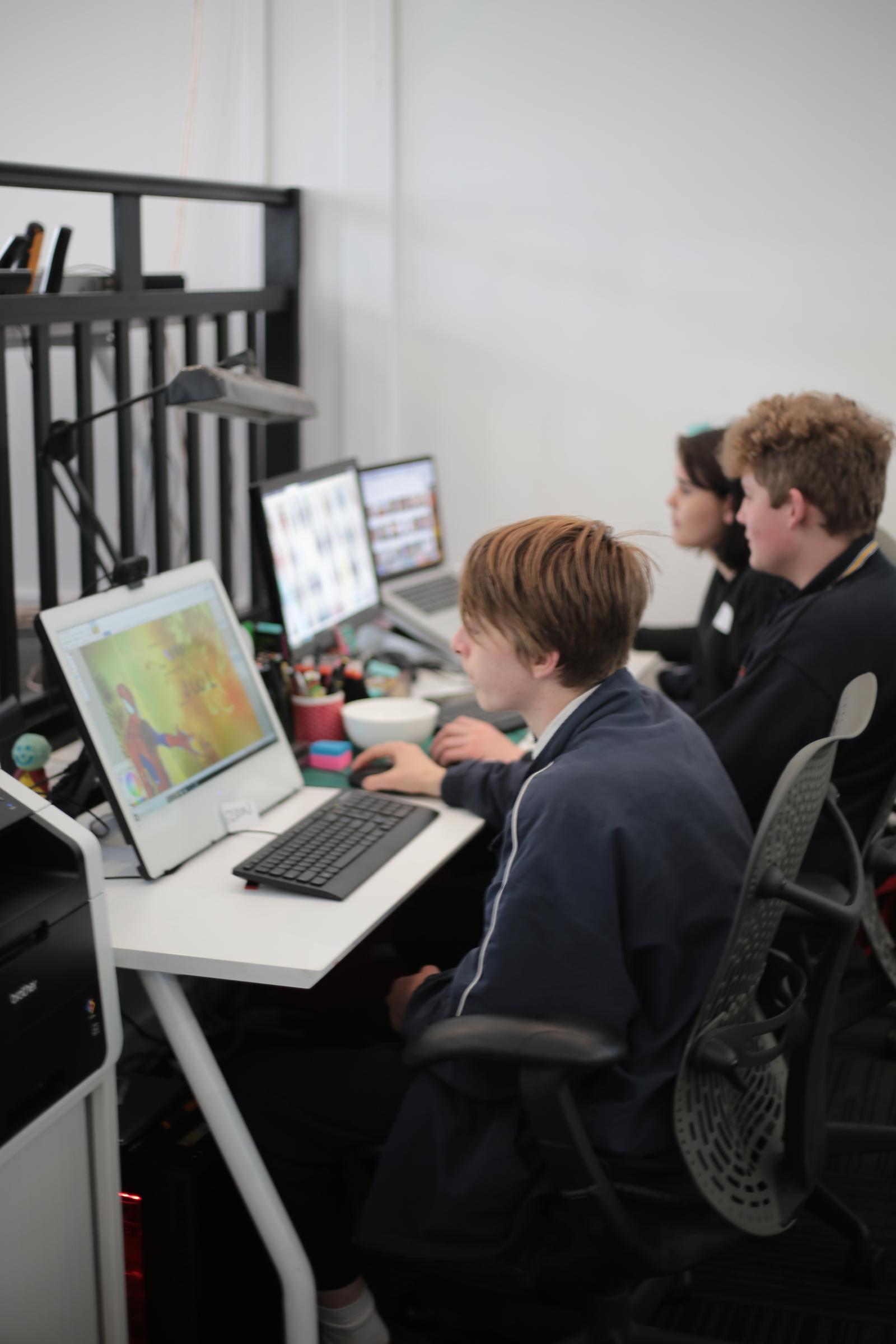
Digital Communications (cyber safety) media project with some of our Year 9s.
One of the objectives within Mount Alexander Youth Wellbeing Project is to increase young people’s skills and capacity to design and implement projects that increase resilience and mental health. CSC's Wellbeing Team are working closely with the Mount Alexander Shire Council to meet this objective. Storyland, however is making it all come real. Storyland is a full service creative agency using video, social media, brand and marketing and is working with the students to explore and create media to communicate how to be safe and happy online. Twenty-seven Year 9 students were elected to participate in the program.
The students got straight into it during their first session by working with two local actors. They took a look at how written communication can be read and understood in very different ways.
[image #1]. They heard their own recorded stories and of things going wrong online, told by an animated character.
[image #2]. Over the next sessions they will design their own animated characters to share anonymous stories.
[image #3]. Spliting into groups, a filming group re-staged the actors to record the “spoken text messages”,
[image #4], while another group worked on memes...
[image #5] and the remainder worked on face construction for the animated characters.
[image #6]
The second Digital Communications class took place at the “storyland” offices last week.
The project is running for the next 3 weeks and will result in a public launch of the media created by the group on the 7th of November.
Our work has been highlighted in Central Vic PCP news below:
Glandular fever
Aka : infectious mononucleosis
Aka: The kissing disease
As CSC currently has a couple of students with glandular fever, we hope the following information will refresh your knowledge on the symptoms for early detection and treatment and hopefully prevent further students catching it.
Here are Some Fast Facts:
- Glandular fever is usually caused by the Epstein-Barr virus (EBV).
- Symptoms include a sore throat, flu-like aches and pains, a widespread, non-itchy rash, fever, swollen glands and fatigue.
- It has an incubation period of 4 to 6 weeks. In other words, symptoms appear 4 to 6 weeks after the person is infected with the virus.
- The symptoms may continue for several weeks, and the fatigue may persist for several months.
- There is no cure, and glandular fever usually passes without treatment.
- EBV is contagious. It can be passed on through contact with the saliva of a person who has the infection, for example, through kissing, coughs and sneezes and when sharing cutlery and drink containers.
- A person remains contagious for at least 2 months after initial infection with EBV...another reason not to share drink bottles!
- Keep healthy e.g. get enough sleep and eat well.
- If you, or your child have any of the aforementioned symptoms, please see you doctor
- For more information please access: https://www.betterhealth.vic.gov.au/health/conditionsandtreatments/glandular-fever
or contact our School Nurse, Alli Williams on 5479 1111.
- Don’t forget to let the school know if your child is diagnosed with glandular fever.
Young People and Drugs
Young People and Drugs
Drugs – what every parent needs to know
We live in a world where drugs are unavoidable:
• 17% of young people identified themselves as being committed smokers.
• 35% of young people reported having their first full serve of alcohol by the age of 14.
• 21% of young people men and women aged 14-17 drink alcohol at short term risk of alcohol related harm–at least monthly.
• 17% of young people aged 16-24 reported using cannabis once a week or more.
We can’t ‘drug-proof’ our young people, but we can make it less likely that drugs will become a major issue in their lives.
It is important not to get too dramatic. Most young people do not use drugs, and most go on to live happy and fulfilling lives. Many of the strategies we have put in place in the past few years are working. Death rates of young people are falling. The rate of heroin overdose deaths has fallen. Fewer young people are smoking tobacco. However, we can always do better.
How?
Firstly, it is important that school students have access to accurate information about drugs. Trying to scare them out of it doesn’t work. Telling them just to “say no” doesn’t work either.
No drug is instantly addictive but some drugs can be instantly fatal (whether taken in isolation or in combination with driving a vehicle).
Most of the problems for young people actually relate to legal rather than illegal drugs. Pain relievers are Australia’s most abused drugs
Types of drug using young people
Broadly speaking there are three main categories of drug using young people:
Experimenters: Many young people experiment with drugs but do not go on to become regular users. We need to ensure that if these young people do experiment they do so safely.
Socially disconnected young people: These young people see drugs as a way of fitting in and gaining friendships. In many ways, this is the most preventable group. By ensuring that each person in our school has a range of people to associate with, rely upon and talk to, we can lessen this group substantially.
Self-medicators: These young people with emotional difficulties such as depression use drugs as a way of treating their distress. We need to ensure that these young people get the professional help that they need.
What to look for
Throughout the later years of school, it is wise to keep asking yourself the following questions:
• When was the last time I had a good conversation with my child?
• Is he or she more secretive?
• Is she or he locked away in the bedroom more often?
• Does my child have access to money that I can’t explain?
• Has his or her appearance changed (looks tired, red or glazed eyes, sniffing as if he or she has a cold, restless, agitated or unusually irritable)?
• Do I know my child’s friends?
• Am I getting silent hang-ups when I answer the telephone?
• Is there any evidence of drug-using paraphernalia such as plastic bottles with holes in the side, pieces of garden hose, scales or spoons?
• Does my family have rituals (regular activities or events) that we do together?
• Are there alcohol-free family rituals?
• Does my family convey a message that misuse of substances is not acceptable?
Risk and Protective Factors
Risk factors in secondary schools:
• drug misusing peers (especially for girls)
• opportunities to use drugs
• depression
Note: Drug misusing teenagers tend to over-estimate the prevalence of drug use among young people.
Protective factors in secondary schools:
• connectedness with family and school, and a diversity of friends
• academic success
• social and resistance skills
How can we make drug misuse less likely?
Drug misuse decreases as connectedness to an adult increases. Stay involved in your child’s life.
Young people often act as if their parents are an unnecessary and embarrassing burden. Don’t fall for this act. They need you around more than they (or you) know.
Know their friends. Organise social functions; food is a good way to get to know teenagers.
If you are worried, talk to someone. Don’t be afraid to seek help. School can be a good place to start. Information on drugs can be obtained from:
Direct Line - 1800 888 236
DrugInfo Clearinghouse - 1300 858 584
Parentline - 132289
Family Drug Help - 1300 660 068
Be prepared to talk to your child about your concerns and persist until you feel reassured (not just until they say “it’s all right – don’t worry”). If you remain concerned, seek help. In addition to the above help lines, GPs, student welfare coordinators, drug and alcohol services and psychologists are also useful sources of assistance.
More info is available here: https://www.education.vic.gov.au/documents/school/teachers/health/parentsdrugscommon.pdf

